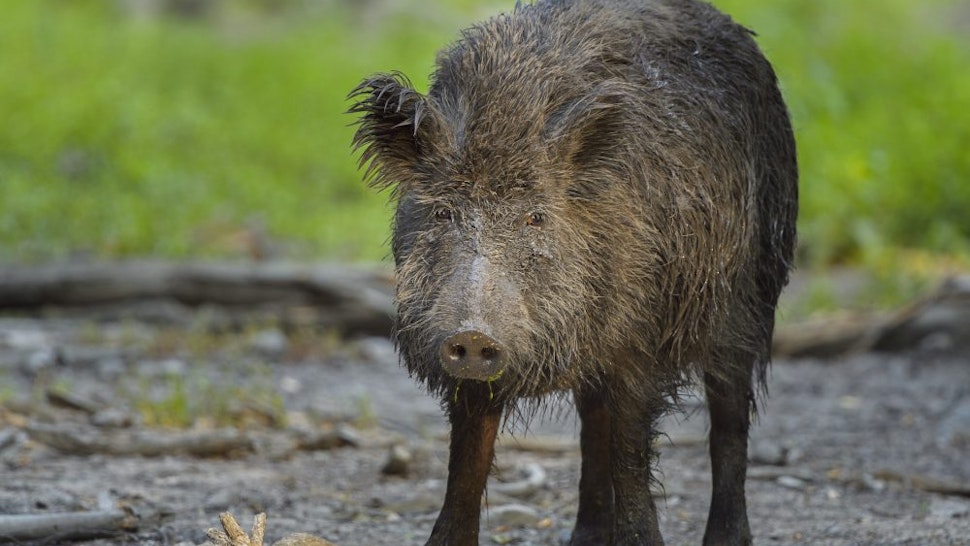Radioactive Boar Hybrids
Radioactive Boar-Pig Hybrids Emerge From Fukushima Disaster Site, According To Study
Researchers at Fukushima, the site of the 2011 nuclear disaster in Japan, have found that a new mutant species of radioactive boar-pig has emerged from the wasteland.
According to a new study that investigated the impact of nuclear disasters on the local habitat, the high levels of radiation had no “adverse effects” on the genetics of the animals.
“However, wild boars (Sus scrofa leucomystax) have proliferated in the area, after being left to roam freely from the lack of humans,” The Daily Mailreported. “The boars have bred with domestic pigs (Sus scrofa domesticus) that escaped from nearby properties after farmers had to flee, creating a new hybrid species.”
“The study has been led by Donovan Anderson, a researcher at Fukushima University in Japan, who has been driving through the land exclusion zone around the Fukushima nuclear reactor,” The Daily Mail explained. “For the study, Anderson colleagues analyzed DNA samples from muscles of 243 wild boars, pigs and boar-pig hybrids, taken from local slaughterhouses.”
According to the study, 31 wild boar were hybrids, representing 16 percent of the wild boar from that region.
“We show evidence of successful hybridization between pigs and native wild boar in this area,” Anderson and his colleagues announced. “We recommend that future studies assess the fitness of these hybrids and better characterize their ecological niche.”
Anderson also noted that the cross-breeding has nothing to do with radiation, even though the boar-pigs are radioactive.
“While the boar and hybrids are technically radioactive, the radiation had nothing to do with the genetic changes — this was the pigs’ fault,” said Anderson. “The wild boar in Fukushima are still relatively contaminated and can range from as no detection of radionuclides to 30,000 becquerels per kilogram.”
The Fukushima nuclear disaster in 2011 was primarily caused by an earthquake and subsequence tsunami and was the most severe nuclear disaster since the Chernobyl disaster of 1986.
Following the earthquake, the active reactors automatically shut down, with backup diesel generators automatically starting to cool the reactors’ cores. After a 46-foot high tsunami hit the shore, however, the emergency generators failed, which resulted in three nuclear meltdowns, three hydrogen explosions, and the release of radioactive contamination.
“There were no deaths immediately during the nuclear disaster. At least 16 workers were injured in the explosions, while dozens more were exposed to radiation as they worked to cool the reactors and stabilize the plant,” reported the BBC this year. “Three people were reportedly taken to hospital after high-level exposure.”
As the BBC noted, “Long-term effects of the radiation are a matter of debate.”
“The World Health Organization (WHO) released a report in 2013 that said the disaster will not cause any observable increase in cancer rates in the region,” the BBC added. “Scientists both inside and outside Japan believe that aside from the region immediately around the plant, the risks of radiation remain relatively low.”
The Daily Wire is one of America’s fastest-growing conservative media companies and counter-cultural outlets for news, opinion, and entertainment. Get inside access to The Daily Wire by becoming a member.


